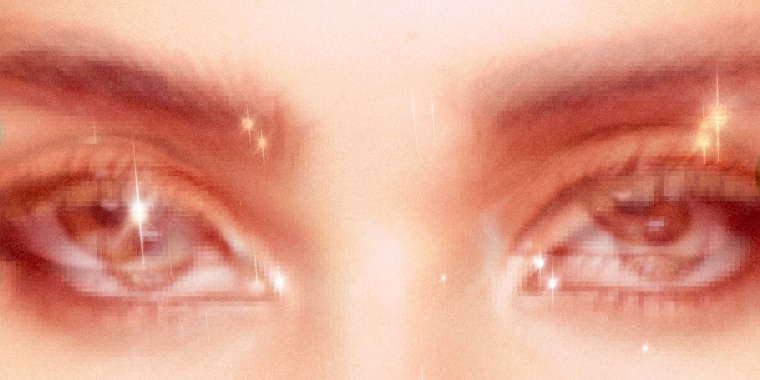The new “bold glamour” TikTok filter, which seamlessly applies makeup and sculpting effects to users’ faces, is impressive — but many viewers feel unsettled by how “terrifyingly realistic” the subtle facial enhancements look.
The filter, which has been used millions of times in recent days, has been compared to other editing apps associated with creating an unrealistic beauty standard among young women. Critics argue that the effect can have a negative impact on a person’s self-esteem and body image.
In addition to adding light makeup to a person’s face, the filter tweaks their bone structure, smooths their skin and enlarges their lips.
“When I first saw it, it was shocking how incredibly real it looked, compared to other filters,” said Lindsay Borow, 28, who tried the filter in a TikTok video.
In her video, Borow said she looked like a “catfish” and that she “never felt uglier” after she removed the filter’s effect from her natural face.
Borow and other TikTok users expressed concerns that the filter could be detrimental to users' mental health.
A recent study from the Centers for Disease Control and Prevention found that 57% of teenage girls reported feeling “persistently sad or hopeless.” Amid several stressors including the coronavirus pandemic, gender discrimination and dress codes, one teen told NBC News last week that girls can get caught in a cycle of comparison on social media.
“I feel awful for young girls with access to these filters honestly,” one TikTok user wrote in the caption of her video.
“I don’t think my brain knows how to deal with looking like this one minute and then this the next,” another user said in a video as she switched from the bold glamour effect to no effect.
“i am so happy my teenage self only had dog ears on snapchat,” one TikTok creator said in another video caption.
A spokesperson for TikTok did not respond to a request for comment.
Hira Mustafa, 26, said that various TikTok filters have previously affected her mental health because of how much they changed her face.
"I think it’s making a lot of heavy photoshopping filters that celebrities have on all of their images online more accessible to people," Mustafa, who made her own video critiquing the bold glamour filter, said. "But there are consequences to people seeing faces like that all the time and then being critical of themselves unnecessarily to compete with these unrealistic images."
One of the other problems with the filter, some users said, is that it's close enough to a person's natural appearance that it seems like an attainable look. However, re-creating it proves to be difficult.
Borow said after creating a makeup look similar to what the filter uses, she demonstrated that she could not totally re-create the filter’s effect on her own.
“I realized that whatever I did to my makeup to try and look like that, once I had the makeup on and put the filter back on, it still elevated whatever I currently had on,” she said. “So it’s like you’re never going to reach that goal.”
There are consequences to people seeing faces like that all the time and then being critical of themselves unnecessarily to compete with these unrealistic images.
— Hira Mustafa, 26, a tiktok user who made a video critiquing the filter
The filter's "physical changes to our bone structures and our natural features are drastically different than what can be achieved by makeup," Mustafa echoed.
She said she believes the filter promotes Eurocentric beauty standards.
“A lot of people of color, their skin is being lightened, their eyes are being lightened,” she said. “I mean we’re really catering to a very specific standard of beauty.”
Borow said the filter appears to be more technologically advanced compared to previous filters introduced by platforms like TikTok or Snapchat. The bold glamour filter stays on even if a user tries to obstruct it, making it more convincing because you can’t see where the effect ends.
“If you put your hand over a normal filter, you can see where the filter lies, whereas this one, it doesn’t do that,” she said. “I remember when Snapchat first came out with filters and everyone was obsessed with the dog filter. And now this is what we’re working with and the technology is insane.”
Borow found comfort in the fact that TikTok denotes whether a filter was used on a video and believes that disclosure is helpful in distinguishing what’s real from what’s an aspirational filter.
But Mustafa said she thinks it would be helpful for creators to avoid using and promoting the use of these filters altogether.
“If you fill your feed with people who look natural and are not using these things, you can kind of safeguard yourself a little bit to see normal humans on your feed day to day versus the opposite,” she said.
Already, the impact of filters is beginning to bleed into reality, according to Mustafa. She said she has noticed more of her peers reaching toward the look of these enhancing filters using cosmetic surgeries.
“There’s so many women that have been getting under-eye filler and Botox and all these things at a much younger age than I think was typical when we were younger,” she said. “And so seeing that, I feel like these filters are then coming to life in some way that we are then seeing people face-to-face who are looking more and more like these filters and we’re like, ‘Oh, is it the filter? Or is it that people just look like this naturally?’”

